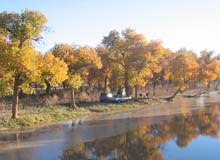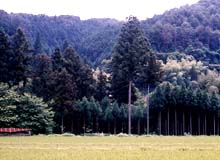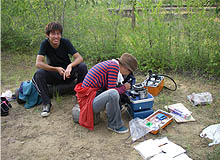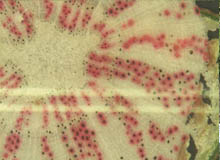Physiological Plant Ecology
Physiological Plant Ecology
Ecological analysis of stand dynamics in forests ecophysiological of water use mechanism in woody species
Staff
 | Assoc. Prof. Dr. MIKI Naoko E-mail:miki@(@okayama-u.ac.jp) Plant physiological ecology |
Research Subjects
The stand structure and dynamics of forests are researched to demonstrate the mechanism of regeneration in forests. The eco-physiological characteristics of invasion, establishment, survival, and growth in relationship to whole-plant water use and matter production of tree species are analyzed to determine the strategies of different species. Based on these research results, an optimal model in the management of forests is constructed for the sustainable conservation of the forests.
Analysis of forest dynamics
|
|  |
Analysis of satoyama forests and development of conservation techniques for the forests
|
|  |
Study on water use characteristics in woody species
|
|  |
A study of the maintenance mechanism of water transport in woody species
|
|  |
Publications
- Miki NH, Sasaki S, Yang L, Ogasa MY (2017) Effects of soil nutrient conditions on water transport properties and recovery from severe drought stress in Pinus densiflora saplings. Journal of Forest Research, DOI: 10.1080/13416979.2017.1320207
- Miki NH, Kubori F, Yang L, Matsuo N, Zhang G, Wang L, Yoshikawa K (2016) Effective water use and growth of a prostrate lifeform shrub, Juniperus sabina, in semiarid areas of China. Journal of Arid Land Studies, 26(3): 95-99.
- Murakami Y, Miki NH, Yang L, Zhang G, Wang LH, Yoshikawa K (2016) Water transport properties of seven woody species from the semi-arid Mu Us Sandy Land, China. Landscape and Ecological Engineering, 12: 209-220.
- Uyanga A, Hamano K, Makimoto T, Kinoshita S, Akaji Y, Miyazaki Y, Hirobe M, Sakamoto K (2016) Temporal and spacial dynamics of an old-growth beech forest in southwestern Japan. Journal of Forest Research, 21: 73-83.
- Ogasa M, Miki NH, Okamoto M, Yamanaka N, Yoshikawa K (2014) Water loss regulation to soil drought associated with xylem vulnerability to cavitation in temperate ring-porous and diffuse-porous tree seedlings. Trees, 28: 461-469.
- Otoda T, Doi T, Sakamoto K, Hirobe M, Baatarbileg N, Yoshikawa K (2013) Frequent fires may alter the future composition of the boreal forest in northern Mongolia. Journal of Forest Research, 18: 246-255.
- Otoda T, Sakamoto K, Hirobe M, Undarmaa J, Yoshikawa K (2013) Influences of anthropogenic disturbances on the dynamics of white birch (Betula platyphylla) forests at the southern boundary of the Mongolian forest-steppe. Journal of Forest Research, 18: 82–92.
- Ogasa M, Miki NH, Murakami Y, Yoshikawa K (2013) Recovery performance in xylem hydraulic conductivity is correlated with cavitation resistance for temperate deciduous tree species. Tree Physiology, 33: 335-344.
- Sakamoto K (2010) Conservation of secondary forests for biodiversity and sustainable bio-resource management in Japan. Proceedings of the 2010 International Conference on Community Forestry, 11-16.